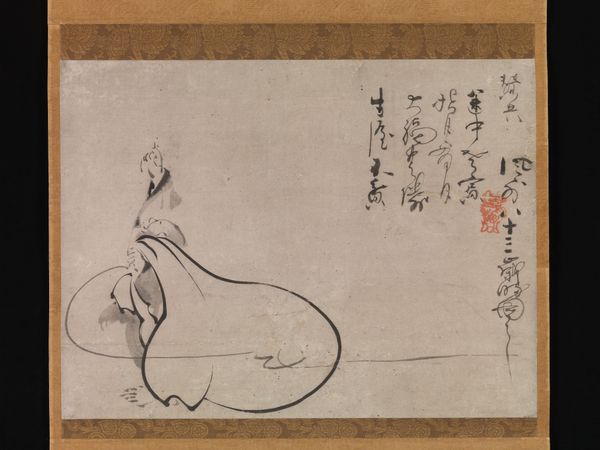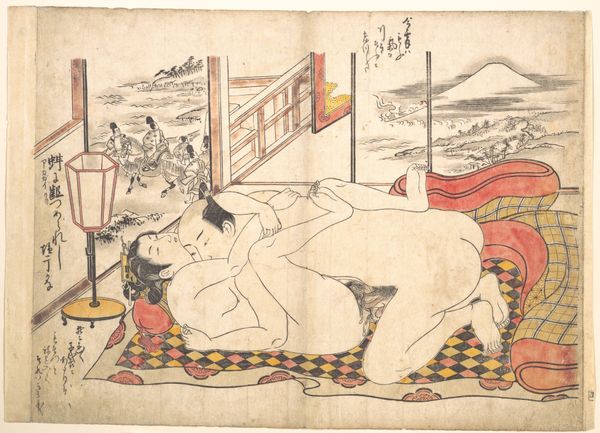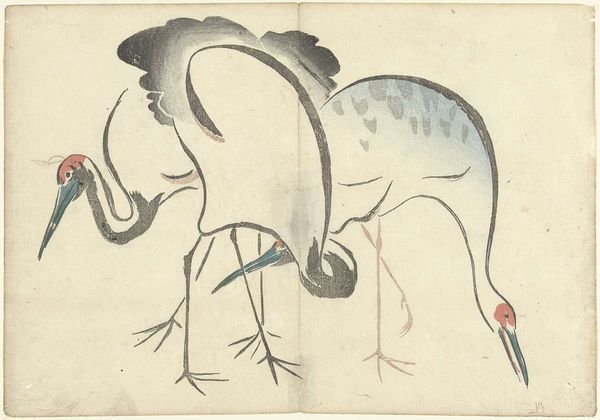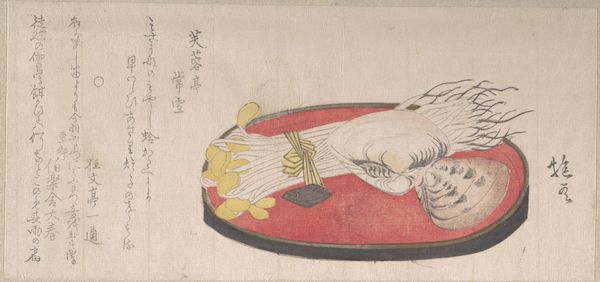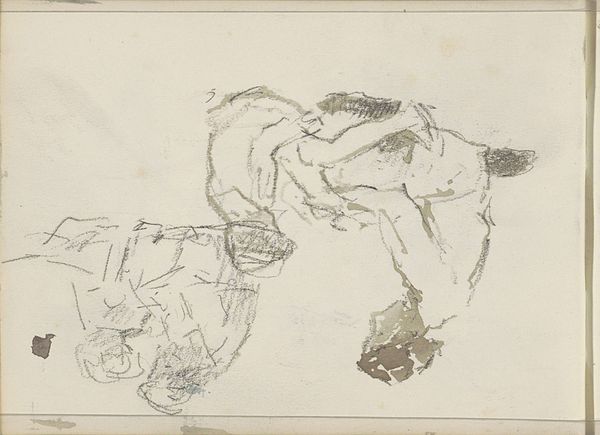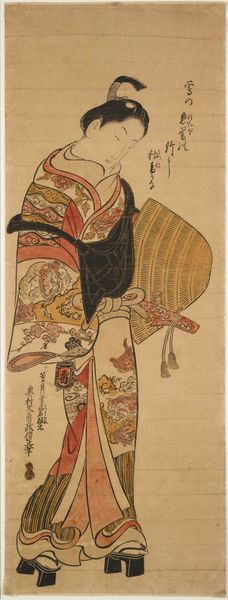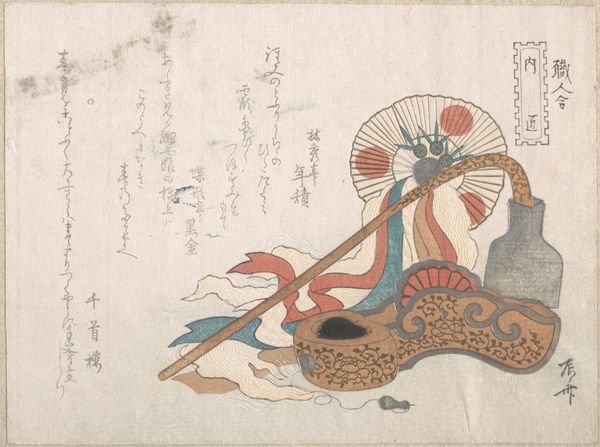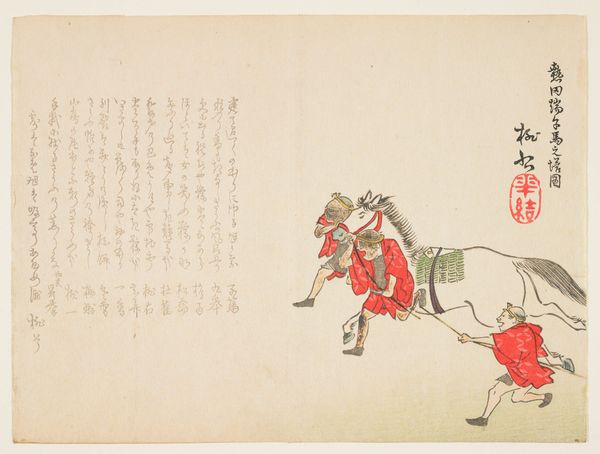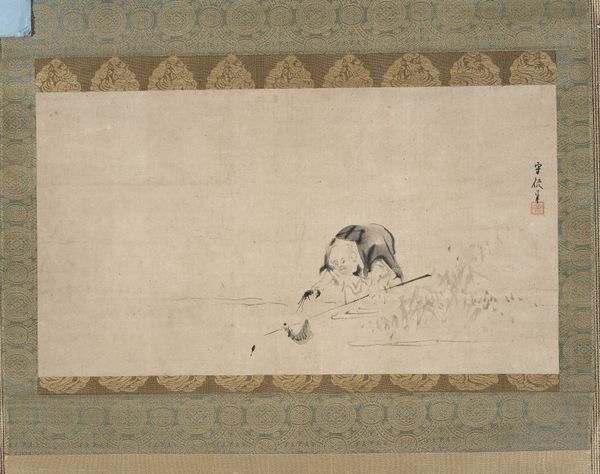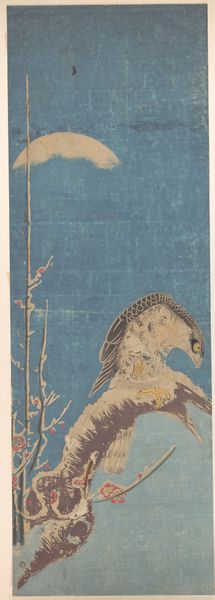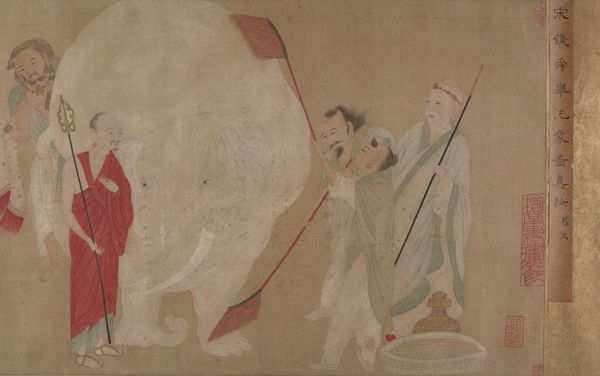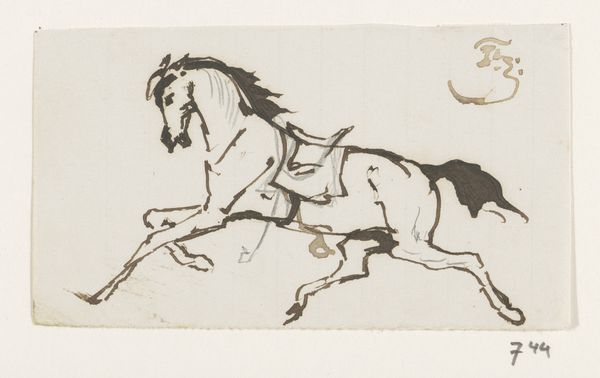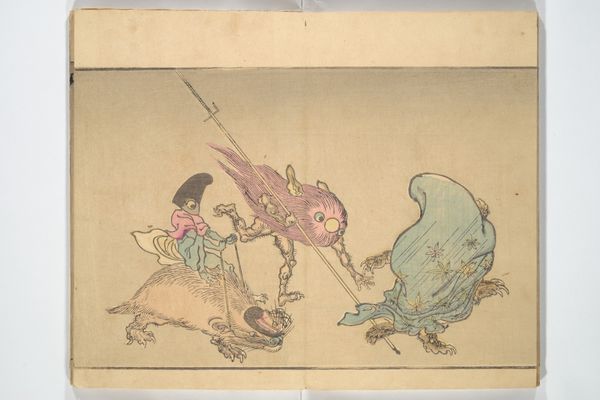
drawing, coloured-pencil, print, ink
#
drawing
#
coloured-pencil
#
animal
# print
#
asian-art
#
ukiyo-e
#
japan
#
figuration
#
ink
#
coloured pencil
Dimensions: 9 3/16 × 11 5/8 in. (23.3 × 29.5 cm) (image, sheet, uchiwa-e)
Copyright: Public Domain
Yamada Hōgyoku created this woodblock print of a dog with a bag over its head in 19th century Japan. It’s an uchiwa-e, or fan print, a popular and informal art form of the Edo period. But why a dog with a bag? While seemingly comical, consider the historical context. The Edo period was marked by strict social hierarchies, and sumptuary laws that dictated clothing, and behavior for each class. Could this image be a subtle commentary on social restrictions? Is the bag a metaphor for the constraints placed on individuals? Is it referencing the Bakumatsu period (1853-1867), a time of political and social upheaval, marked by increasing foreign influence and internal dissent? To understand this print more fully, we can consult historical records, literature, and art criticism from the Edo period. These sources help to reconstruct the world in which Hōgyoku lived and worked, revealing the social tensions and cultural codes that informed his art. Ultimately, appreciating the image's meaning is contingent on understanding its complex social and institutional context.
Comments
No comments
Be the first to comment and join the conversation on the ultimate creative platform.
